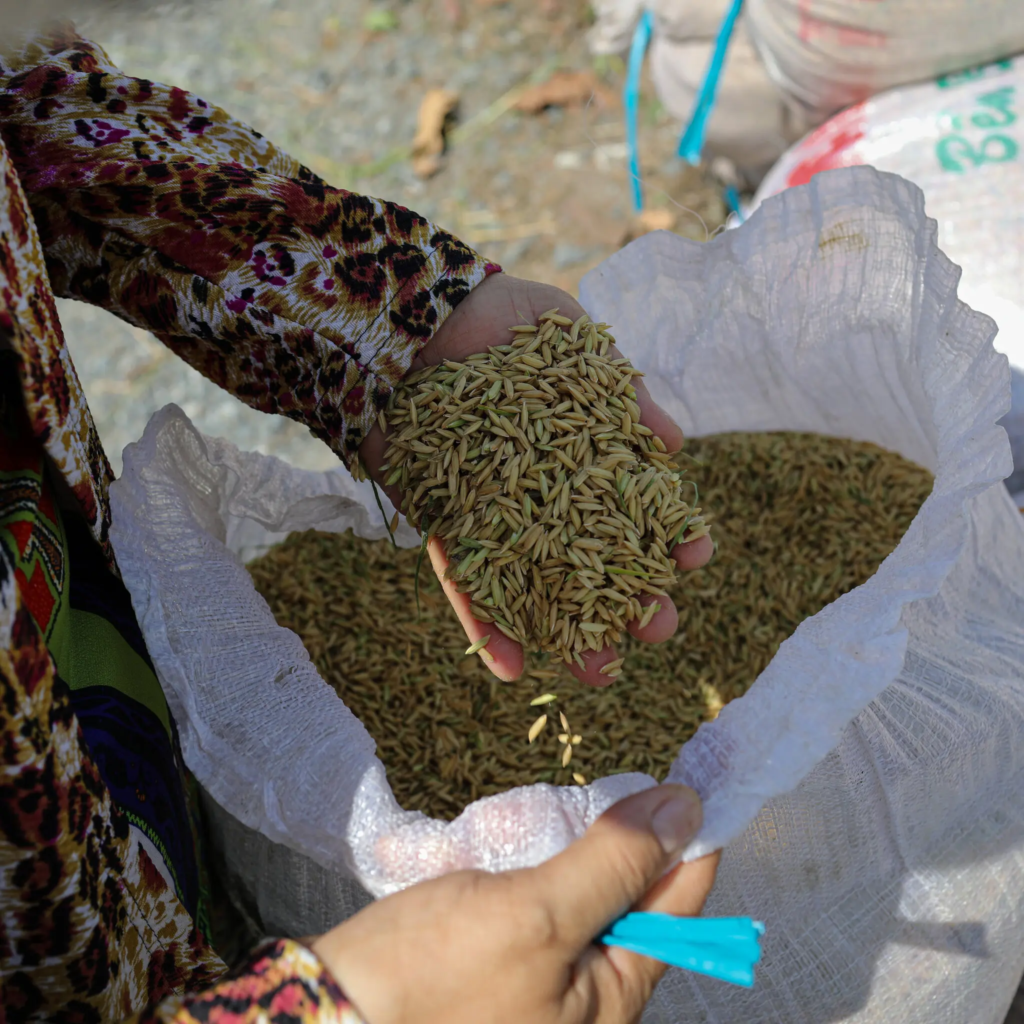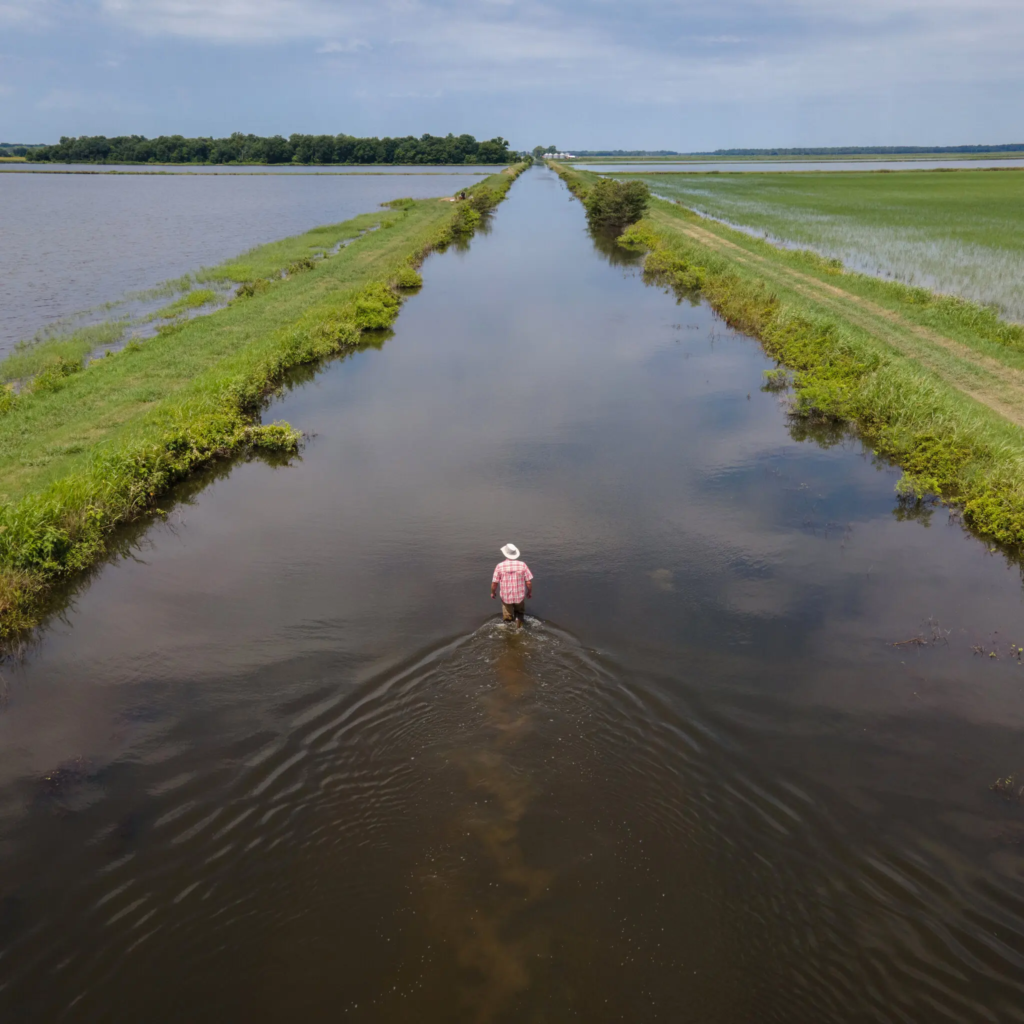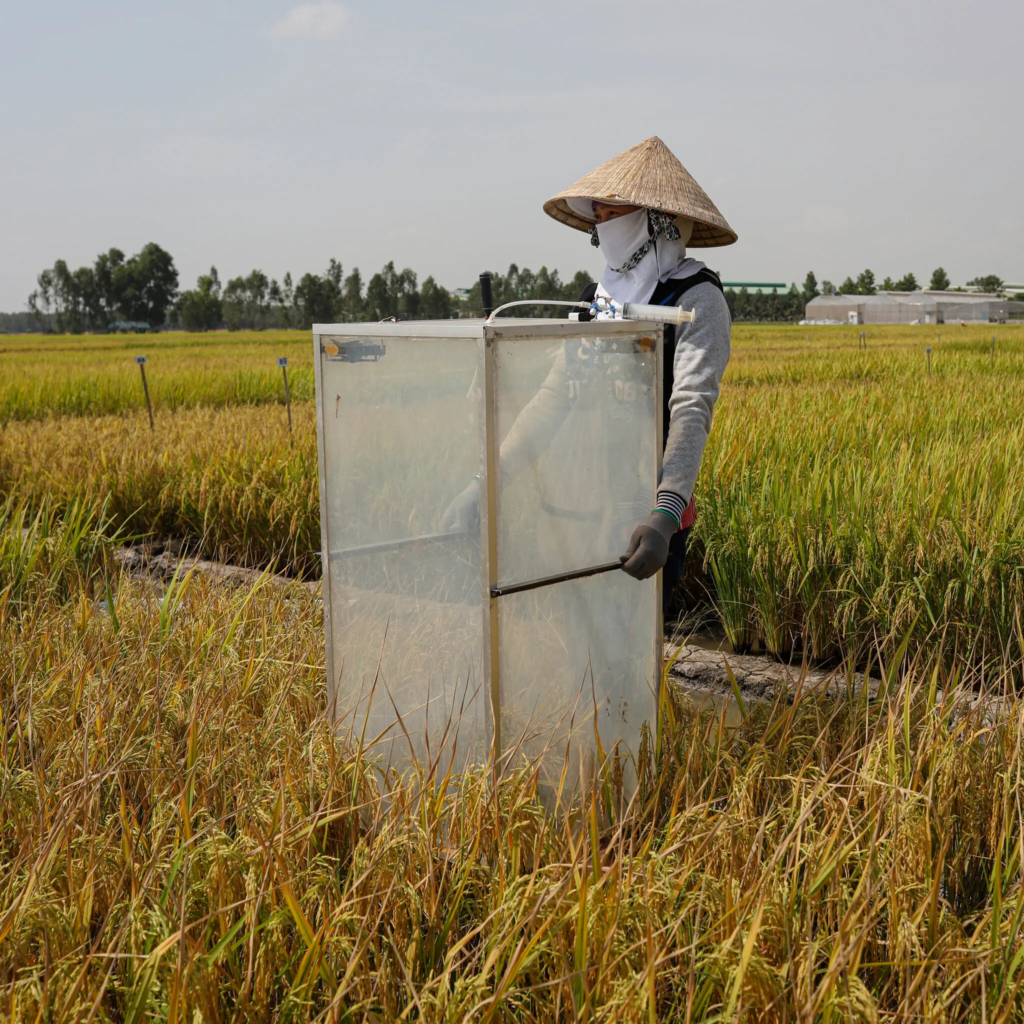Tags
Reimagining Rice, From the Mekong to the Mississippi
People around the world are exploring new ways to grow one of the world’s most important staple crops.

A farmer in the Mekong Delta region of Vietnam inspected a sample from her rice harvest.
Look inside my pantry any given week, and you’ll see rice paper for summer rolls, rice noodles for my slapdash version of pad Thai, a few packets of rice ramen, sake, rice wine vinegar, and rice cakes that the teenager likes to smear with peanut butter. There’s a bag of arborio for an occasional herby risotto, brown rice for rainy day khichdi, a basmati from Bryce Lundberg’s farm in Northern California, and a red rice that Anna McClung, a plant breeder, developed from a variety considered a weed.
In the freezer now, there’s a tub of dosa batter, made of rice flour and lentils, from my local Indian grocer.
Call me a rice-ivore. Me and around half of humanity, actually. Three billion people rely on rice as their staple grain. Hundreds of millions of farmers, most with tiny plots of land, depend on rice for their livelihoods.
I’ve been working on an article about rice for many months because as the Earth heats up, rice is in trouble, threatening the sustenance and livelihoods of many of the world’s poorest people. Tran Le Thuy helped with reporting from the Mekong Delta in Vietnam. Thanh Nguyen and Rory Doyle made pictures and videos.
Extreme heat, erratic rains, rising sea levels: All pose risks to rice growers, especially small farmers who have nothing to fall back on if their crops fail.
“Sometimes there’s not enough rain when seedlings need water, or too much when the plants need to keep their heads above water,” I wrote in the article. “As the sea intrudes, salt ruins the crop. As nights warm, yields go down.”

Rice also pollutes. Flooded paddy fields release methane, a powerful planet-warming gas, accounting for an estimated 8 percent of global methane emissions. But let’s keep that in perspective. Emissions from rice are a small fraction of the emissions from coal, oil and gas. We can’t eat coal, and we can’t drink oil and gas. Rice is different. It’s jollof and pho, paella and pilaf. Once, I met a widow in eastern India who had nothing more to eat than a bowl of rice and salt.
We can’t stop growing rice to slow down climate change. That’s impractical.
So what kinds of rice can be grown, and how?
Intensive rice production saved much of the world from hunger a half-century ago. But it also reduced the great genetic diversity of traditional rice seeds all over the world. Today, most farmers buy rice seeds, many of them hybrid varieties that promise high yields and need chemical fertilizers, which in turn pollute streams and rivers. In many places, rice has drained underground aquifers.
There are efforts to protect and propagate traditional seed varieties that farmers can reproduce on their farms, rather than buying from seed companies. Sometimes, those traditional seeds are hardier to climate stresses. But their grains may not be white and fluffy like those we’ve become accustomed to. Or they may not yield the big harvests that farmers want.

I try to buy heirloom rice varieties, and I try to buy from companies that source from farmers who use a less water-intensive method. It helps to diversify my family’s diet. It creates a market for farmers who go through the trouble. For that, I’m willing to pay more. A 14-ounce bag of Carolina gold just set me back $7.50 plus shipping. It’s something small and tangible I can do as a consumer: Promote more traditional varieties of rice and better ways of growing it.
In some places, farmers are shifting away from rice.
In the Mekong Delta, Vietnam’s most important rice bowl, the government is encouraging farmers to use some of their land to grow shrimp. This is a risky approach.
I saw that in Bangladesh, where intensive shrimp cultivation has supplanted rice paddies along the coast for several decades. Shrimp needs saltwater. And as shrimp farmers allowed the seawater to trickle in, the rivers, ponds and, ultimately, the soil turned salty. Now there’s an acute shortage of drinking water in the dry season. Several farmers I met are scrambling to return their lands to rice.
And other grains? Sorghum and millets are often more nutritious than rice. But rice has a ready market. Governments often buy rice at set prices. They subsidize the fertilizers needed to grow that rice. There aren’t always the same incentives for sorghum and millets. Encouraging farmers to switch means offering incentives, training and also a market.
I was struck by the optimism of Dang Kieu Nhan, the son of rice farmers who now heads the Mekong Development Research Center at Can Tho University. Vietnam’s farmers have overcome adversity before, and they will again. “Local people will come up with more solutions,” he told me when we spoke by videoconference. “I feel confident.”
I hope you’ll read the article, perhaps with a bowl of congee or arroz con leche. Maybe a cup of sake. Or a cool horchata.
https://www.nytimes.com/2023/05/23/climate/rice.htmlPublished Date: May 24, 2023





